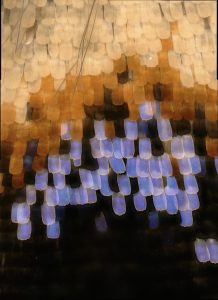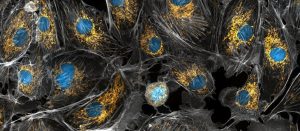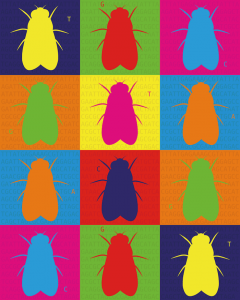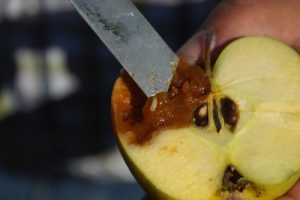Enter your address to receive notifications about new posts to your email.
Science & Publishing
-
Science & Publishing
Behind the cover: CRISPR in color
In the life of a butterfly, color is crucial. Color helps these flashy insects attract mates, avoid being spotted, or even signal to predators that they would make a bad meal. On the cover of the March issue of GENETICS is a close-up view of Junonia coenia, a butterfly with stunning blue eyespots on its…
-
Science & Publishing
Protein variance in tightly controlled developmental processes
Take two neighboring cells from the same tissue—cells that are about as identical as any could be. Despite their similarities, these two cells could actually vary massively in their transcriptome. The typical fate of an mRNA—the “transcript” in transcriptome—is to serve as a template to make a protein, but it isn’t clear that the differences…
-
Science & Publishing
Live long and prosper (under the right conditions)
Restricting calorie intake seems to promote longer lives in a wide range of organisms, from microbes to mammals. Some determined youth-seekers are already adopting reduced-calorie diets in an attempt to extend their lifespans. But it’s not clear yet that these anti-aging effects apply to humans, and the mechanisms by which they work in other organisms…
-
Science & Publishing
New in G3: unstable inheritance, chromosomal translocation, and meiotic silencing
Check out the April issue of G3! Table of Contents Mutant Screen Report Identification of Genes in Saccharomyces cerevisiae that Are Haploinsufficient for Overcoming Amino Acid Starvation Nancy S. Bae, Andrew P. Seberg, Leslie P. Carroll, Mark J. Swanson G3: Genes, Genomes, Genetics April 2017 7: 1061-1084; https://doi.org/10.1534/g3.116.037416 Investigations A Whole-Transcriptome Approach to Evaluating Reference…
-
Science & Publishing
Incompatibility between mitochondrial and nuclear genomes isolates many nematode populations
Constant mutation and shaping by natural selection can make the once-identical genomes of isolated populations of organisms very different from one another. This genetic divergence can lead to two such populations no longer being able to interbreed successfully—speciation. In their paper in the March issue of G3, Lamelza and Ailion show that harmful interactions between…
-
Science & Publishing
April GENETICS Highlights
Check out the April issue of GENETICS by looking at the highlights or the full table of contents! ISSUE HIGHLIGHTS Mismatch repair incompatibilities in diverse yeast populations, pp. 1459-1471 Duyen T. Bui, Anne Friedrich, Najla Al-Sweel, Gianni Liti, Joseph Schacherer, Charles F Aquadro, and Eric Alani Microbial populations with elevated mutation rates can adapt more rapidly to new…
-
Science & Publishing
50 years of molecular evolution in Drosophila
In the genomic era, population geneticists are flooded with molecular data on the evolution of natural populations. This deluge started in 1966 as a trickle of data from protein electrophoresis studies, including the landmark GENETICS papers published by Richard Lewontin and John Hubby. As Lewontin is honored this week at the Annual Drosophila Research Conference…
-
Science & Publishing
Snorkeling out of the membrane
One of the last places you’d expect to find a charged amino acid residue is buried within the hydrophobic interior of a lipid bilayer. And for the most part, this expectation holds true: portions of proteins that span membranes are typically composed of hydrophobic residues. But in some cases, the positively charged residues lysine and…
-
Science & Publishing
New in G3: bone geometry, lysosome function, and single-molecule sequencing
Check out the March issue of G3! Table of Contents Investigations Genomic Regions Associated with Tolerance to Freezing Stress and Snow Mold in Winter Wheat Erika B. Kruse, Scott W. Carle, Nuan Wen, Daniel Z. Skinner, Timothy D. Murray, Kimberly A. Garland-Campbell, Arron H. Carter G3: Genes, Genomes, Genetics March 2017, 7: 775-780; DOI: https://doi.org/10.1534/g3.116.037622…
-
Science & Publishing
March GENETICS Highlights
Check out the March issue of GENETICS by looking at the highlights or the full table of contents! ISSUE HIGHLIGHTS Simultaneous modeling of disease status and clinical phenotypes to increase power in genome-wide association studies, pp. 1041-1047 Michael Bilow, Fernando Crespo, Zhicheng Pan, Eleazar Eskin, and Susana Eyheramendy Jointly modeling clinical phenotype and disease status is a promising…
-
Science & Publishing
A single gene controls multiple feeding-related traits in fruit fly larvae
Fruit fly larvae have one goal: eat as much as possible. After the tiny worm-like larvae hatch from eggs embedded into the flesh of rotting fruit, they eat their way out. After days of gorging, they find a good spot to pupate and then emerge as adults. Fruit flies cannot grow after this transformation, however,…









![By National Park Service [Public domain], via Wikimedia Commons.](https://s43361.pcdn.co/wp-content/uploads/2017/03/biscayne_np_snorkeling-1-300x214.jpg)


